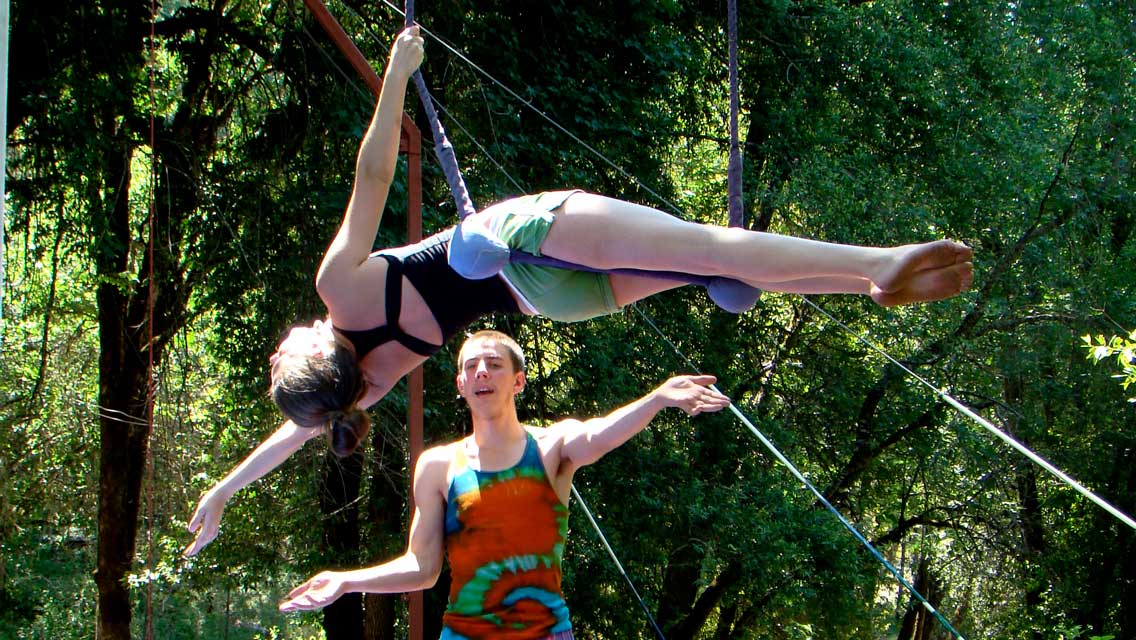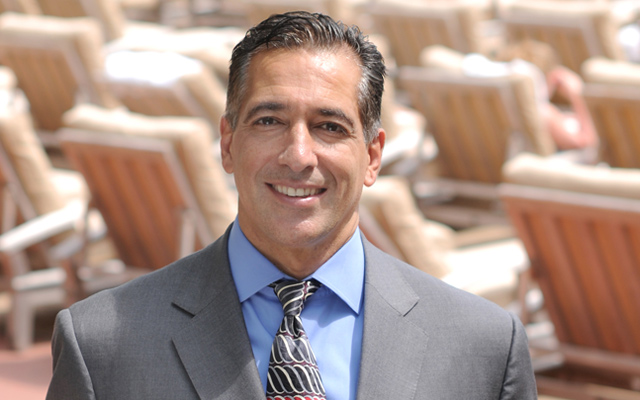You’ve always pictured yourself as daring: climbing Mt. Kilimanjaro, competing in an Ironman triathlon, learning to scuba dive so you can explore the depths of the Blue Hole like Jacques Cousteau. You’ve carried that vision with you for months or years — possibly since you were a little kid. Yet you’ve kept deferring the dream.
It’s never the right time; you’re too busy with “real” life; you lack motivation or money. Pursuing something so far outside the realm of your current reality can seem pie-in-the-sky, selfish, risky. But in truth, not acting on a life dream can also be detrimental to your health.
“The energy it takes to ignore an inner longing is greater than the leap of faith it takes to move you in the direction of your dreams,” says Aruni Futuronsky, senior life coach at the Kripalu Center for Yoga and Health, in Stockbridge, Mass. “As people take steps to fulfill their goals, they feel better physically, have more energy and become more emotionally alive.”
Opportunities to take your big leap might be closer than you imagine. So, whether your fantasy involves belaying El Capitan or tangoing across the dance floor, you owe it to yourself to reach for it. “Taking a chance on yourself and tackling challenges is essential for growth,” says Futuronsky. “The safety of keeping small is not good enough.”
Need a little real-life inspiration? Meet some people who seized their dreams — and expanded their horizons in the process.
From Real Estate to Downward Dog
Lynne Begier, 38, always did what society and her family thought she should do. She landed a job as a corporate real-estate analyst in Boston and quietly settled into the 9-to-5 grind. But she wished for more: to integrate spirituality into her daily life and contribute to society in meaningful ways.
Vague about what direction to take, Begier gradually began to focus on her yoga practice. It was, she realized, the only thing that made her feel fully present in her body, something that often eluded her — she’d struggled with an eating disorder in college.
Still, when she told her mother she wanted to enroll in a monthlong yoga teacher training at Kripalu, she was shocked by the response. “My mom told me, ‘No way. Stick with your legitimate job,’” Begier recalls. “She even enlisted my sister to help turn me against the idea.”
Begier wasn’t even sure she would make a good yoga teacher, but she still felt pulled toward Kripalu. “At the worst I’d have a month in the country to breathe, eat well, do yoga and learn.”
So she saved her vacation time, negotiated a leave of absence from her job, and set off for the Berkshire mountains. At Kripalu, she immersed herself in dawn-to-dusk practice, savoring the yogic lifestyle. “The people in that spiritual community are so balanced,” she says. “That’s the life I wanted.”
Begier’s days started at 6 a.m. with sadhana (spiritual practice), followed by seminars in anatomy, yogic philosophy, self-awareness, breathing techniques and teaching practice. After classes, she swam in the lake, hiked through the woods, soaked in the hot tub or got a massage. “I learned to take care of my body,” she says. “I ate healthier, and, even after 12 hours of yoga, I felt energized, not depleted.”
“That month changed me so many ways,” says Begier, who now owns two successful Boston yoga studios. Four months after the yoga training, she rented a space and hired instructors. She kept her real-estate analyst job for a year before cutting the cord: “Its security paid my rent and gave me time to grow into teaching without the financial pressure,” she says. “And my previous business skills were assets for running the studios.”
Begier feels healthy and confident in her new role. And as she passes along her dream to others, she gets to see them changing their own lives. “It’s the greatest feeling when students of mine go on to become teachers themselves.”
A Couple Who Went to the Wilderness
Wilderness survival tests your physical stamina, but it can also invigorate your soul. That was the challenge that Porter Storey, 59, a Denver-area hospice and palliative-care physician, embraced in 2004 by pursuing his dream: hiking the 2,650-mile Pacific Crest Trail (PCT).
“At the time, I sought deeper meaning in life,” Storey recalls. He’d just resigned from a hospice job in Houston because of budget cuts to patient care. “Things had gotten so soulless in the urban environment that I wanted to break into a whole new world. The idea of being outside and walking cross-country appealed to me.”
His wife, Gail, was less enthusiastic — at least at first. “Initially, the PCT dream was all Porter’s — I had never backpacked or camped before, and I couldn’t imagine six months of it,” says the 63-year-old novelist. “But eventually we both realized the potential of being together 24/7 on a trip like that, and I signed on.”
The couple dove into a year of preparation. To finance the adventure, they sold their house, a car and most of their possessions. Because they were attempting during middle age a feat performed mostly by 20-somethings, they needed ultra-light gear, which Porter designed and sewed.
They set out on the southern end of the trail in early April. After two-and-a-half months of rugged trekking, Gail was forced to abandon the journey when her health faltered in California’s snowy High Sierras. But that didn’t diminish their sense of shared accomplishment. “Even though we were physically separated for the last three months, it felt like Gail and I did this hike together,” says Porter. He reached the Canadian border in late September.
Looking back, the couple considers their adventure pivotal. “Our marriage deepened immeasurably under the stresses of wilderness survival,” says Gail, who has written a memoir about their trip, titled I Never Much Cared for Nature. “We had close calls with hypothermia, dehydration, frostbite and near-drowning while crossing creeks, but the gorgeous surroundings made it worth the physical and emotional challenge.”
Nature also changed their perspective. “Living outside for six months puts you in touch with nature’s cycles,” says Porter. “Synchrony with summer and winter helped me come to terms with the living and dying that goes on in a hospice doctor’s world. Being in nature is critical to my emotional well-being, and it re-enlivened me professionally.”
His intimate experience with the cycles of nature didn’t just renew Porter’s spirit; it allowed him to return to medicine with the perspective he needed to keep doing his life’s work. He now serves as the Executive Vice President of the American Academy of Hospice and Palliative Medicine.
From Student to Circus Performer
Ever imagine running away to join the circus? After thinking about it a while, University of Vermont student Alexandria Kerrigan, 23, pursued that dream at Camp Winnarainbow, a circus and performing arts camp in Mendocino County, Calif. There, in a single week, the childhood education and psychology major learned to juggle, ride a unicycle, stilt walk, work on the aerial trapeze and do magic tricks. In the process, this shy young woman discovered the performer within.
Founded by Wavy Gravy, the tie-dye-clad, hippie-humanitarian and impresario, Camp Winnarainbow encourages kids and adults to tap into their creative, silly, adventurous sides. In the woods, campers sleep in teepees, perform on the outdoor Rainbow Stage, wear comical costumes and laugh — especially when plummeting down a 350-foot-long slide into the lake.
Kerrigan found the hilarity suited her, despite being a self-described introvert. On the first day of camp, she showcased her newly acquired stilt-walking talents before a cheering crowd of fellow campers. It was surprisingly easy for her to step out of her normally quiet persona and ham it up in that supportive environment. “Getting on stage brings out my circus-performer self,” she admits.
That alter ego still peeks out now and then. Kerrigan once surprised a frazzled airline employee by donning her red clown nose as she waited to check in. He upgraded her to first class for making him laugh. “I always carry juggling balls,” she says. “Whenever I need to break the ice in a social situation, I pull them out and perform.”
Learning circus arts has opened doors for Kerrigan — juggling, unicycling and magic tricks are handy at parties or when working with kids. (For the last two summers, she’s worked at Camp Winnarainbow, helping with the children’s sessions.) And she’s considered leaving college for the circus, though for now she’s taking a semester off for more intensive performance training.
“Following my dream to Winnarainbow has directed me along a new path,” she says. “If you want to try circus performing but you don’t want to devote your whole life to it, this camp is perfect.”
Camp Winnarainbow charms and challenges people of all physical capabilities — and the emphasis is on fun, not creating circus stars. “We’re creating universal human beings who can deal with whatever comes down the pike with timing, balance, compassion and a sense of humor,” says Wavy Gravy. “People come away from a week at Winnarainbow recognizing their inner child and feeling ready to return to the world and having more fun.”
And isn’t that, after all, what following your dream is all about?
Dream On
Can’t decide whether you were meant to cycle across the country or study tai chi in China? Use journaling, guided meditation or visualization to help uncover your dreams, suggests Kripalu life coach Aruni Futuronsky. Begin with these questions:
• What’s your perfect day like?
• What excites you?
• What opens your heart?
• What’s something you always wanted to do but never thought you could?
Once you’ve identified your heart’s desire, start making it happen:
1. List incremental steps to fulfill your goal.
2. Take one small step in that direction. Then another, and another.
3. Incorporate bits of your dream into your life. If you can’t yet make it to India for that six-month yoga retreat, take the weekend intensive at your local studio.
4. Stay true to yourself. When doubts surface, journal or meditate to get back in touch with your inner voice.
5. Support yourself by seeking encouragement from people who have fulfilled their own dreams.




This Post Has 0 Comments